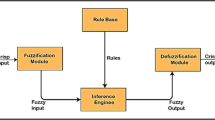Abstract
Breast cancer is the important problem across the globe in which, most of the women are suffering without knowing the causes and effects of the cancer cells. Mammographic is the most powerful tool for the diagnosis of the Breast cancer. The analysis of this mammogram images proves to be more vital in terms of diagnosis but the accuracy level still needs improvisation. Several intelligent techniques are suggested for the detection of Microcalcification, Clusters, Masses, Spiculate lesions, Asymmetry and Architectural distortions in the mammograms. But the prediction of the cancer levels needs more research light. For the determination of the higher level of accuracy and prediction, the proposed algorithm called Enhanced Gray Scale Adaptive Method (EGAM) which works on the principle of combination of K-GLCM and Extreme Fuzzy Learning Machines (EFLM). The proposed algorithm has achieved 99% accuracy and less computation time in terms of classification, detection and prediction when compared with the existing intelligent algorithms.











Similar content being viewed by others
References
Cheng, H. D., Shi, X. J., Min, R., Hu, L. M., Cai, X. P., and Du, H. N., Approaches for automated detection and classification of masses in mammograms. Pattern Recogn. 39:646–668, 2006.
AlQoud, A., and Jaffar, M., A., Hybrid Gabor based Local Binary Patterns Texture Features for classification of Breast Mammograms. International Journal of Computer Science and Network Security. 16:2, 2016.
Tulio, C. S. S. A., and Rangayyan, R. M., Classification of breast masses in mammograms using neural networks with shape, edge sharpness, and texture features. J Electron Imaging 15(1):013019, 2006.
Zhang, P., Kumar, K., and Verma, B., A Hybrid Classifier for Mass Classification with Different Kinds of Features in Mammography. FSKD. LNAI 3614:316–319, 2005.
Swiniarski, R., Lim, HK., Independent Component Analysis, Principal Component Analysis and Rough Sets in Hybrid Mammogram Classification. International (SPIE) Symposium Medical Imaging, 2003.
Ren, J., and DongWang, J. J., Effective recognition of MCCs in mammograms using an improved neural classifier. Eng. Appl. Artif. Intell. 24:638–645, 2011.
Jaffar, A., Hybrid texture based classification of breast mammograms using adaboost classifier. International Journal of Advanced Computer Science and Applications. 8(5), 2017.
Singh, AS., Pawar, M.M., Mass classification of mammogram images using selected textural features with PNN classifier. International Journal of Innovative Research in Computer and Communication Engineering. 5(4), 2017.
Abu-Amara, F., and Abdel-Qader, I., Hybrid mammogram classification using rough set and fuzzy classifier. International Journal of Biomedical Imaging. 2009, 2009.
Murali, S., and Sathees Kumar, P., Multiclass classification of mammogram images with GLCM features. International Journal of Engineering Research Science and Technology, 4(1), 2015.
Surendiran, B., and Vadivel, A., A hybrid classifier for mammogram mass classification using various new geometric shape and margin features. Int. J. Rapid Manuf. 2(1/2):56–75, 2011.
Nithya, R., and Santhi, B., Mammogram classification using maximum difference feature selection method. Journal of Theoretical and Applied Information Technology. 33(2):197–204, 2011.
Suganthi, M., and Madheswaran, M., An improved medical decision support system to identify the breast cancer using mammogram. J. Med. Syst. 36(1):79–91, 2012.
Yoshida, H., Doi, K., Nishikawa, R., Giger, M., and Schmidt, R., An improved computer-assisted diagnostic scheme using wavelet transform for detecting clustered microcalcifications in digital mammograms. Acad. Radiol. 3:621–627, 1996.
Bettahar, S., and Stambouli, A. B., Shock filter coupled to curvature diffusion for image denoising and sharpening. J. Image Vision Comput. 26:1481–1489, 2008 Elsevier.
Suganthi, M., and Madheswaran. Mammogram image enhancement and denoising using shock filters. Proceedings of International Conference on Advanced Communication and Informatics, TPGIT, Vellor, 2009.
Tripathi, N., and Panda, S. P., A review on textural features based computer aided diagnostic system for mammogram mass classification using GLCM & RBFNN. International Journal of Engineering Trends and Technology (IJETT). 17(9):462–464, 2014.
Economopoulos, T. L., Asvestas, P. A., and Matsopoulos, G. K., Contrast enhancement of images using Partitioned Iterated Function Systems. Image Vis. Comput. 28(1):1–212, 2010.
Tomar, R., and Kashyap, I., Efficient technique for texture features based CAD system for mammogram images using GLCM and RBFNN. Advances in Computer Science and Information Technology (ACSIT). 2(7):68–71, 2015.
Lincy Golda Careline, S., and Leena Jasmine, J. S., Microcalcification and Macrocalcification Detection in Mammograms Based on GLCM and ODCM Texture Features Using SVM Classifier. International Journal of Advanced Engineering Research and Science. 4(6):010–016, 2017.
Kumar Singh, A., and Gupta, B., A Novel Approach for Breast Cancer Detection and Segmentation in a Mammogram Elsevier page No 676–682, 2015.
Author information
Authors and Affiliations
Corresponding author
Ethics declarations
Conflict of Interest
C. Selvi has no conflict of interest with Co-Author M.Suganthi. No conflict of Interest between Two Authors.
Ethical Approval
This article does not contain any studies with human participants or animals performed by any of the authors.
Informed Consent
As this article does not involved Human participants so, no such informed consent.
Additional information
This article is part of the Topical Collection on Education & Training
Rights and permissions
About this article
Cite this article
Selvi, C., Suganthi, M. A Novel Enhanced Gray Scale Adaptive Method for Prediction of Breast Cancer. J Med Syst 42, 221 (2018). https://doi.org/10.1007/s10916-018-1082-7
Received:
Accepted:
Published:
DOI: https://doi.org/10.1007/s10916-018-1082-7




